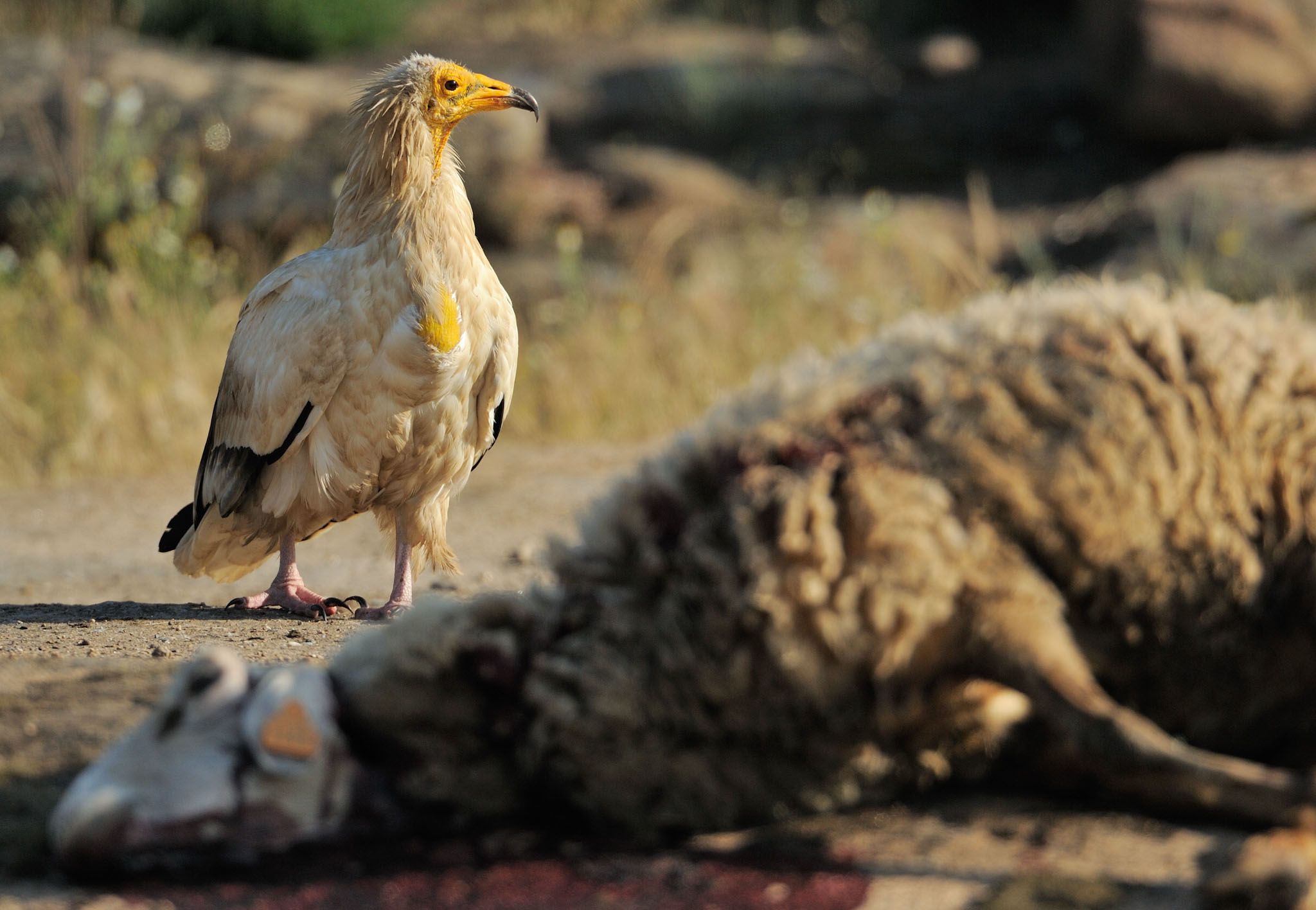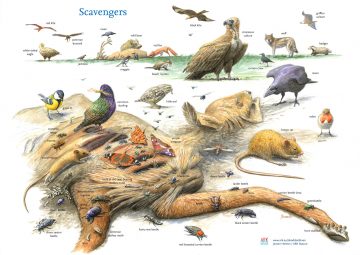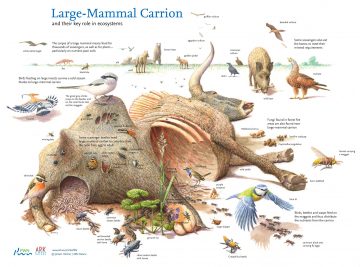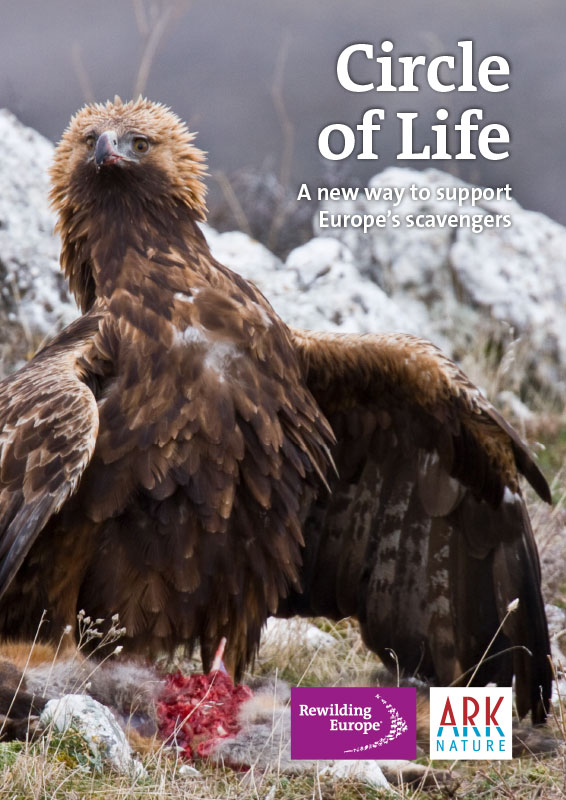This year’s final European Rewilding Network webinar, held in December, saw members from eight European countries come together online to discuss and learn the importance of leaving carrion in nature.

Rewilding Europe regularly organises webinars for members of the European Rewilding Network (ERN) to discuss rewilding related topics and share insight and experience. The network currently boasts 61 members from 26 countries across Europe.
This latest webinar saw members come together to discuss the Circle of Life project, which aims to increase the availability of carrion in nature for the benefit of Europe’s scavengers. Rewilding Europe and Dutch NGO ARK Nature have recently published the Circle of Life brochure, which provides readers with ecological insight and practical ways of bringing back the close relationship between carrion and scavengers.
Carrion should be a normal part of the circle of life. But across the European continent today, wild herbivore carcasses have become a rare commodity. Wilderness has become arable land, populations of wild grazers are often managed at low densities, and legislation demands the immediate removal of dead livestock. As a result, much of the biological “waste” has disappeared from the European ecosystem, negatively impacting scavengers.
Bart Beekers, Circle of Life specialist and project coordinator for ARK Nature, and Steffen Bengtsson from Faunaforst, Denmark, presented their work on pilot Circle of Life projects, the challenges they have overcome, and the obstacles they still face, particularly in terms of the current regulatory environment.
Bart Beekers spoke about ARK Nature’s Dutch project “Dood doet Leven” (“Circle of Life”) that began almost 10 years ago. In line with a lot of conservation work, this project has needed time to bear fruit, but is now achieving promising results. A growing number of Dutch nature organisations are now choosing to give road kills a final resting place in nature, rather than destroy them (as is the case in most of Europe), while several public surveys have shown that Dutch people are increasingly acceptant of such an approach.

In the past large populations of wild horses, aurochs, bison, elk, roe deer and red deer roamed free across Europe. Each year countless numbers would die from old age, food scarcity and predation, providing food for an army of scavengers.
But over the last century this situation has completely changed. Today there is a huge lack of carrion, with wild herbivore numbers low and their populations managed through hunting, and legislation stipulating that livestock carcasses (including road kills) must be removed and destroyed. With Europe now experiencing a wildlife comeback, both of its own accord and due to conservation activities, the need to complete the circle of life is an urgent one, as the sustainability of this comeback is directly linked to it.
Beekers continued by presenting pilot areas in Belgium, Germany and the Netherlands where road kills (roe deer, red deer and wild boar) are returned to nature, and where a percentage of remains from hunted animals are also left in the wild. He also stressed the need for strong communication, with internet polls and student research in the Netherlands revealing that almost two-thirds of visitors to nature are positive about the presence of large carcasses in nature, and that the circle of life concept is well understood.
Steffen Bengtsson presented the current situation on carcass management in Denmark. He is involved in several areas where the Circle of Life approach is implemented, and spoke about how restoring this ecological process benefits biodiversity. As an example, Bengtsson told the group how 60 species of beetles were found on carcasses over a period of two years, including one species from the Danish Red List and new species for the region.

He continued to explain the crucial role of communications and education in achieving acceptance of the Circle of Life by both Danish authorities and communities. An example of this is the educational work done at a so-called Rotting site (Rådnepladsen) in a deer park, which focuses on reaching out to the younger generation. Here a ranger leads groups of children to an area where a carcass has been left to decompose, explains how and why it is being scavenged, and how death creates life as a result.
Bengtsson also pointed out that leaving road kills in situ is not particularly helpful as many large scavengers are quite shy and aware of the risks posed by traffic.
During the lively discussion that followed, it became clear that other ERN members shared the same views about the importance of the circle of life. However, many face similar challenges in different rewilding settings. Participants expressed a desire to share more experience and insight in the future, both to progress thinking and discuss how to fully make use of EU regulations concerning dead animals in nature. Members of the LIFE DinALP Bear project from Slovenia shared their experience of transferring road kills to bear feeding sites.
The ERN operates on a stronger together philosophy, promoting rewilding as a conservation approach. Through the year, members meet regularly via webinars to share knowledge, insight and examples of best practice. The presentations from webinars are stored on the recently launched ERN Forum, a real-time platform for discussions and exchange between members.
Rewilding Europe extends a warm welcome to all European rewilding initiatives who are interested in joining the ERN. Information on applying for membership can be found here.

